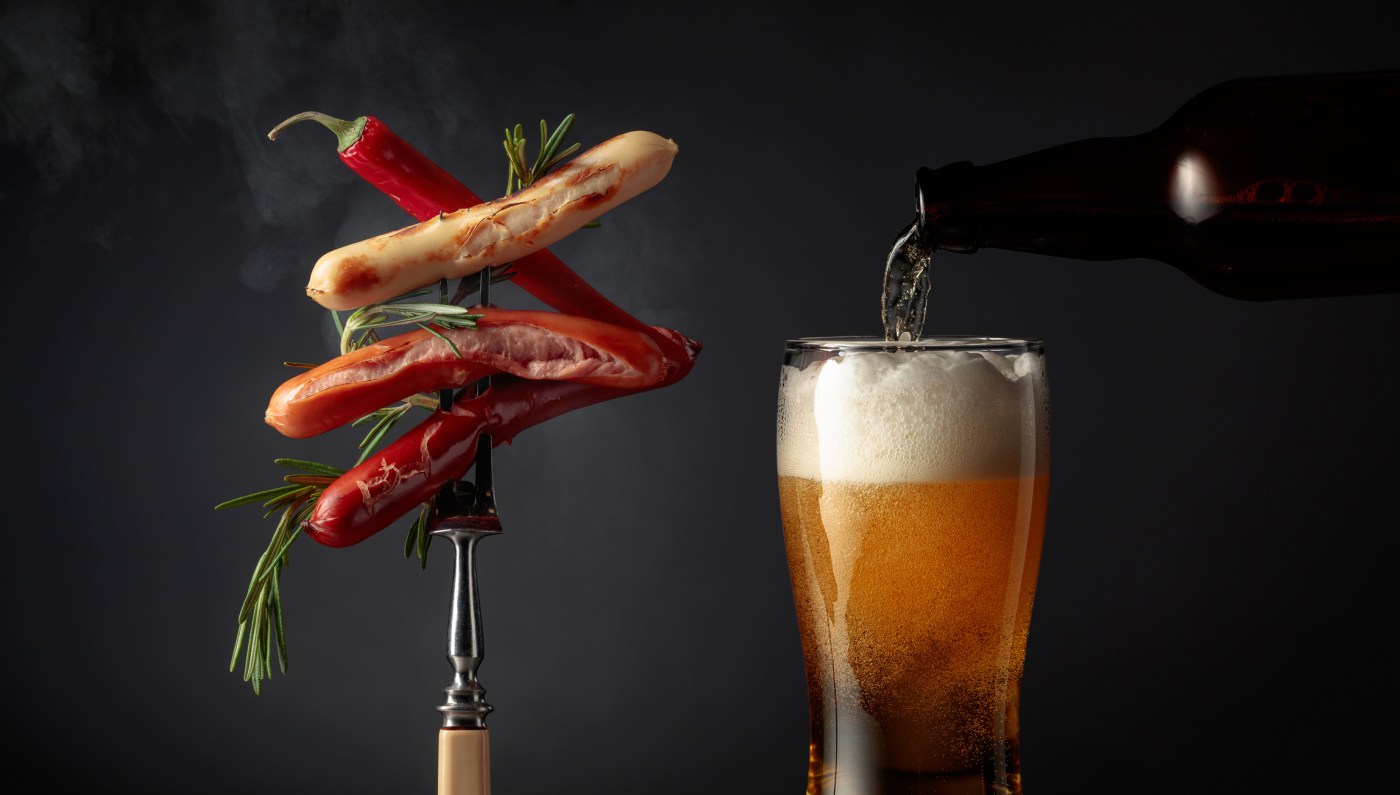Confession: I grew up eating bland foods and never developed a taste for spiciness. My wife, children and friends, who all love spice in its myriad forms, enjoy taunting me to try different foods, usually by claiming something like, “It’s not too spicy! You’ll be fine.” I never am.
Whenever I ate spicy foods as a kid, my mother would give me a glass of milk to help ease the burning. I never knew why, but it seemed to work. The good news is that the right beer works too, helping me not only tolerate spicy food but almost enjoy the experience. And for people who already love that chili pepper heat, the combination becomes sublime.
So whether you’re a seasoned spicehound or a nervous novice, here’s some advice for pairing beer with spicy foods and how to do so with your eyes wide open (and hopefully not tearing up).
Here’s a hot take: I don’t think IPAs work well with spicy foods. While many beer lovers claim that IPAs match well with spicy foods, these drinks really only increase the perception of spiciness. The high alpha acids in hops, which are especially prominent in IPAs, can blend with capsaicin – the active component that gives chile peppers their heat – and create a feedback loop that increases the heat. This is true whether it’s the heat from habaneros or something else. A hop-forward beer will only emphasize the spiciness.
Spicy tacos, jalapeno poppers, whatever the heat your dish is packing, there’s a beer pairing that will help cool you off. (Getty Images)
Of course, if you’re trying to put out the fire in your mouth, any cold drink will help, but the relief is merely temporary. As soon as it dissipates, and your mouth begins to warm up again, the heat comes roaring back. That’s because capsaicin is hydrophobic: Water won’t dilute it, and beer is more than 90 percent water. Capsaicin’s kryptonite is fat — that’s why milk works, by the way — and alcohol.
To have any meaningful impact, there are a few strategies you can employ. One of the difficulties in pairing spicy food with beer is that spiciness alone is a mouthfeel, not a flavor — but it can blend with different flavors, like sweet, salty or sour. So the goal is to either match strength with strength, where appropriate, or balance like or similar flavors. You should also consider how sweetness or carbonation can affect the pairing.
I find that beers that are more malty and sweet nicely contrast the spiciness. For that reason, I think Märzens, amber lagers or Vienna lagers work much better than IPAs. Their sweetness doesn’t clash with the hot flavors and these beers coat your mouth with a more lasting layer of sweetness.
Try pairing foods that include smoky chiles, such as chipotle or ancho chiles, with a stout, especially one with chocolatey notes. In general, stouts work well with spicy foods, but oatmeal stouts and sweet/milk stouts work especially well. Oatmeal stouts have a silky smoothness from the oats used in making them, while sweet or milk stouts are brewed with malt sugars and even lactose. It’s not the classic milk my mother gave me, but it works in a similar fashion. But if you want to complement the smokiness, choose a beer brewed with roasted malt, like a brown ale.
Many dark beer styles — black lagers, schwarzbiers, dunkels — are good matches for the same reasons, but Moonlight Brewing’s San Francisco-style black lager, Death and Taxes, may be the best of these for pairing with spicy food. These beers often have caramel notes, too — a bonus pairing.
Related Articles
Anheuser-Busch beer sales are down. Its non-alcoholic options are on the rise
Don’t expect Camino Brewing space to be empty for very long
San Jose loses a popular brewery. Is downtown’s momentum in danger of stalling?
Bay Area brewery day trip: Sipping suds at Calicraft and Mike Hess
Red Rocks sells more White Claw than anywhere in the U.S.
Any beer that’s high in residual sugars will work well to cut through the capsaicins. These include many Belgian specialty ales, saisons, barley wines and lambics. Hazy IPAs, which are low in bitterness, can also help to combat spices.
Another way to tackle spice is through bubbles. Some scientists suggest carbonation can activate more pain receptors, making the burn worse, depending on the concentration level of the spices. I find it works for me, though, so if you’d like to run your own experiment, try a Kölsch, saison, witbier, hefeweizen, biere de garde, tripel or a sparkling ale.
Beer and food pairings usually follow rules that everyone agrees work well. Spicy food is different though. People love spicy flavors not in spite of the pain the heat often brings, but because of it. So experiment and find what works best for you. If you enjoy the thrill of the heat, then bring on the IPA.
Contact Jay R. Brooks at BrooksOnBeer@gmail.com.
For more food and drink coverage
follow us on Flipboard.












